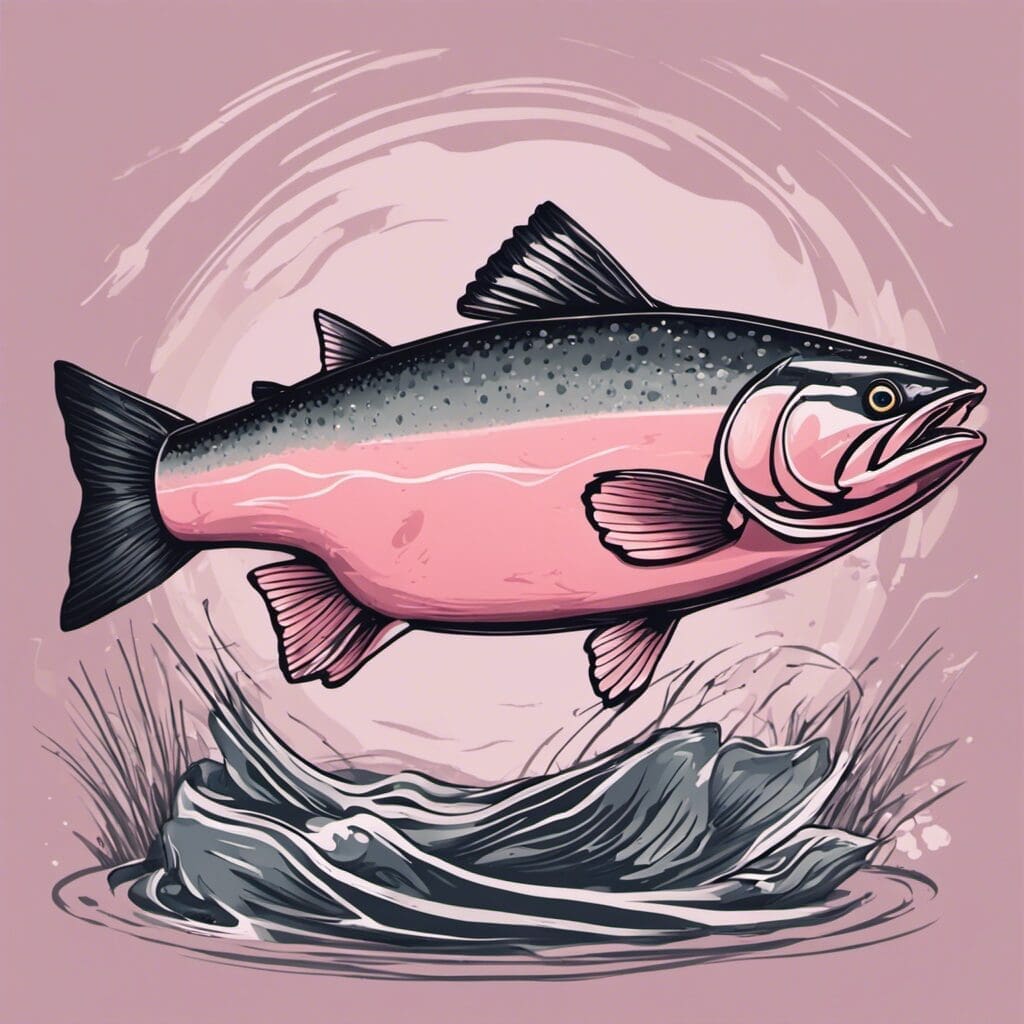Introduction
The Pink Salmon, scientifically called Oncorhynchus gorbuscha, is a common species of the Salmonidae family which encompasses various species of fish like trout, char, grayling, and whitefish.
Conservation Status
The conservation status of the Pink Salmon is categorized as being of “Least Concern” by the International Union for Conservation of Nature (IUCN). Conservation efforts are consistently in place to monitor and manage populations, especially in areas where human activities such as fishing and habitat modification can impact their numbers.
Statistics
The vital statistics of the Pink Salmon are as follows:
| Statistic | Average | Range |
|---|---|---|
| Length | 55 cm | 45-76 cm |
| Weight | 2 kg | 1.4-2.7 kg |
| Lifespan | 2 years | – |
Distribution
Pink Salmon inhabit the Northern Pacific Ocean, with notable populations off the coast of Alaska. They have also been found as far south as the Los Angeles River. Their migration patterns are unique; adults return to their freshwater spawning streams exactly 2 years after they were hatched.
Habitats
Pink Salmon live in both salt and freshwater. In terms of depth, they range from near the surface to 250 meters deep. They prefer colder water temperatures, ranging from 1.1-15.6 °C.
When and Where to See
Pink Salmon are often seen during summer to early autumn as they migrate to their respective spawning grounds. The best time to see them is during the peak of their migration season, particularly during daylight hours.
Best Fishing Locations and Tips
Locations
1. Fraser River, British Columbia, Canada
2. Copper River, Alaska, United States
3. Kvichak River, Alaska, United States
4. Quillayute River, Washington, United States
5. American River, California, United States
6. Puyallup River, Washington, United States
7. Nushagak River, Alaska, United States
8. Sacramento River, California, United States
9. Kuskokwim River, Alaska, United States
10. Yukon River, Alaska, United States
Tips
Look for areas where water is flowing, as Pink Salmon prefer moving waters. Spawning grounds typically have a gravel substrate where females lay their eggs.
How to Catch
Preferred bait or lures for Pink Salmon are usually small spinners or spoons in silver or white. Techniques such as fly fishing, trolling, and drift fishing prove effective. Best times to catch them are during early morning or late afternoon during their migration season.
Identification Guide
Pink Salmon are light silver-blue on top and white on the bottom. They have an identifying hump on their back (more prominent in males), hence the nickname ‘humpies’. They are smaller and slimmer compared to other salmon species.
Culinary
Pink Salmon’s flavor profile is delicate and slightly sweet. It can be baked, grilled, smoked, or canned. This species contains rich oils, high Omega-3 fatty acids, and lean protein. Popular recipes include Honey Garlic Salmon and Lemon-Pepper Salmon.
Additional Information
During spawning season, adults feed minimally. Some of their predators include bears, eagles, and larger fish. They are also threatened by overfishing and climate change.
References and Further Reading
For more detailed information about Pink Salmon, the following resources are recommended: Alaska Department of Fish and Game, University of Alaska Southeast, FishBase, NOAA Fisheries Service. Remember to always open the links in new tabs

